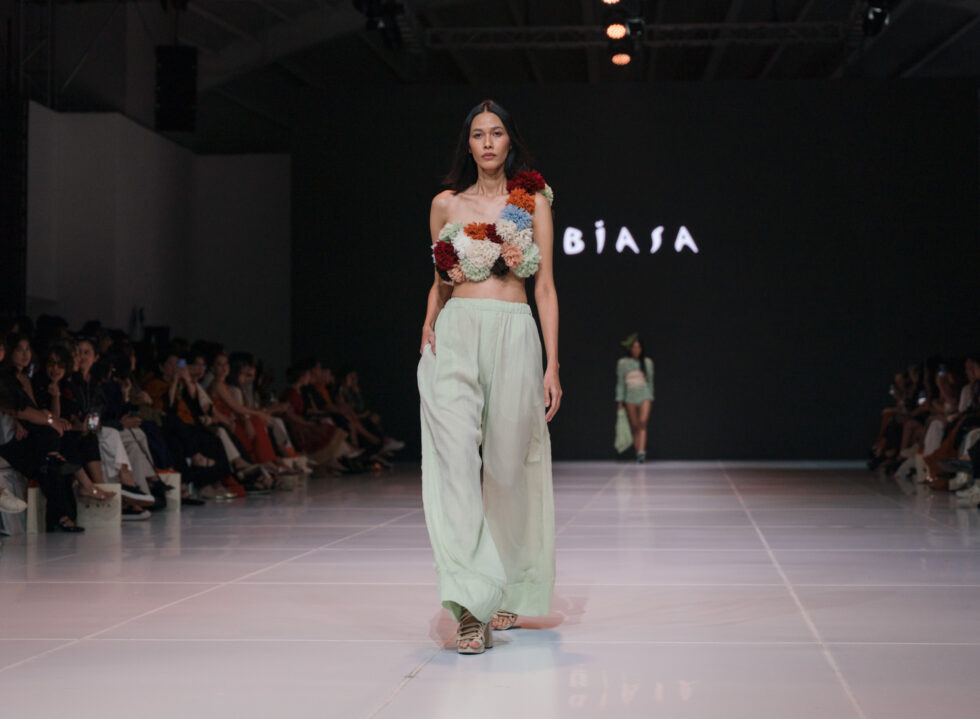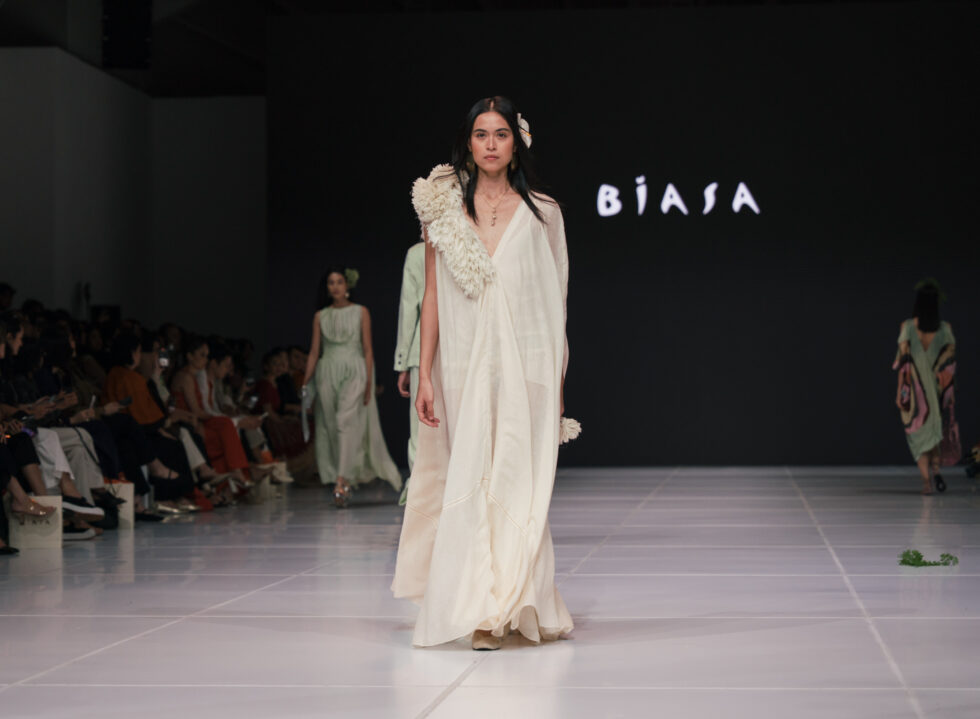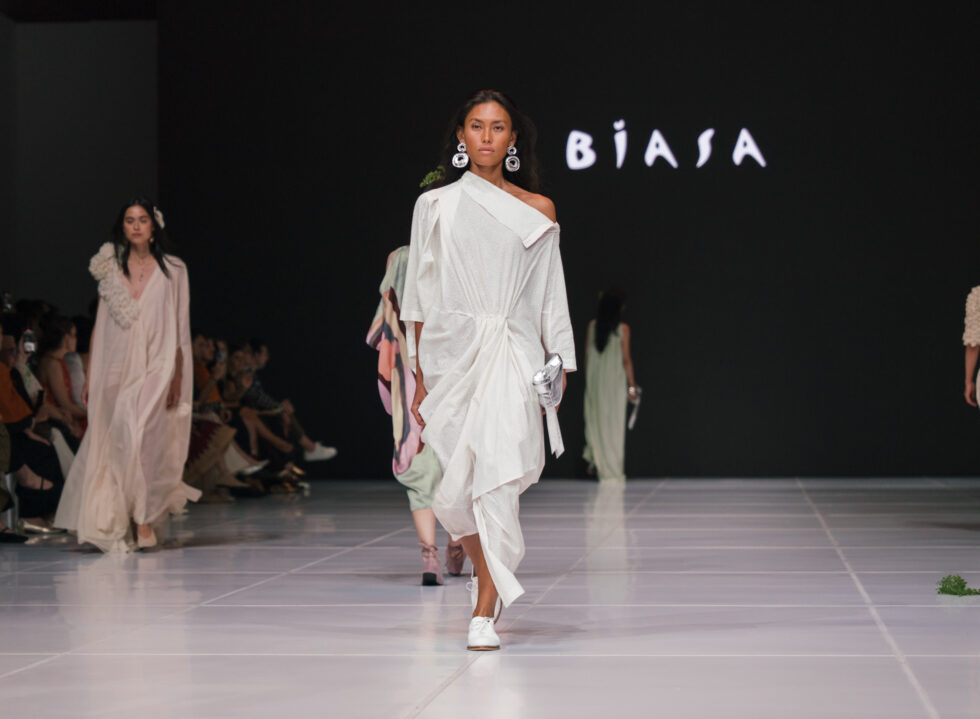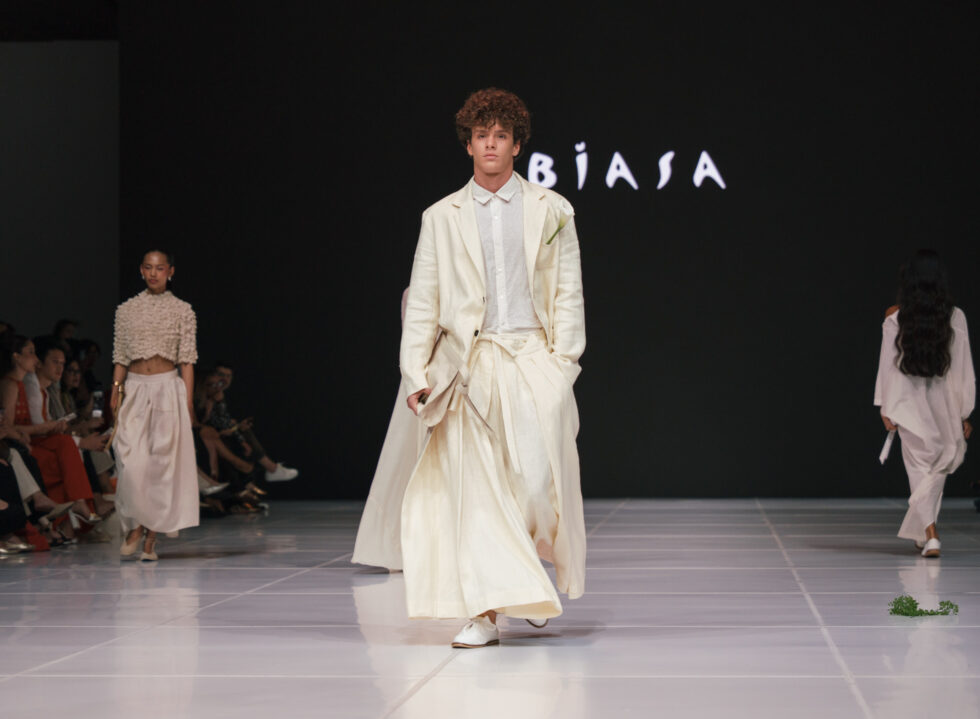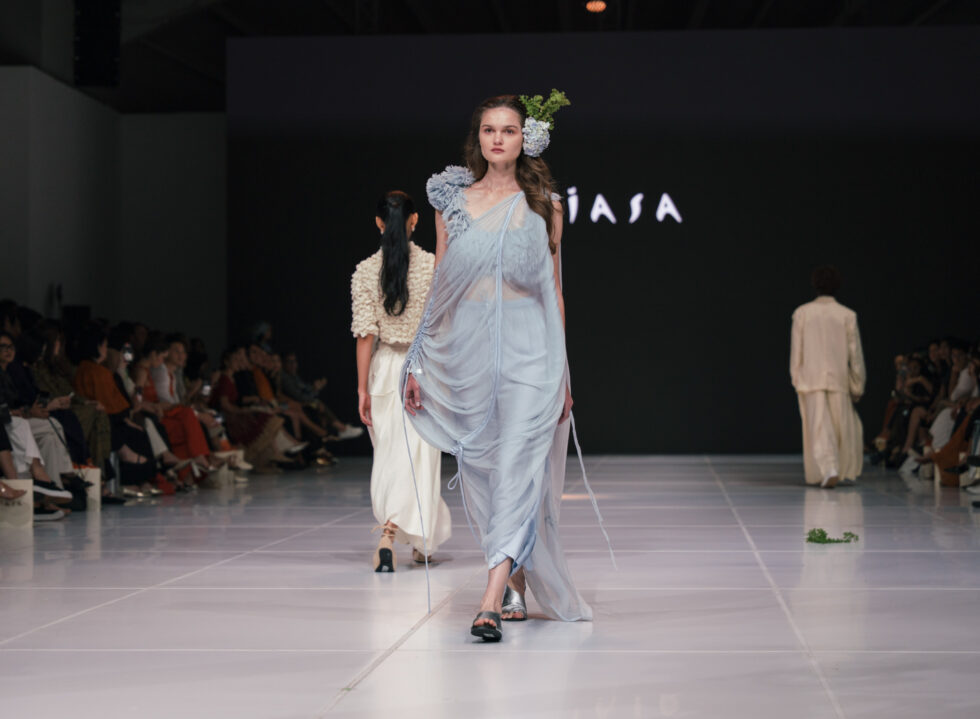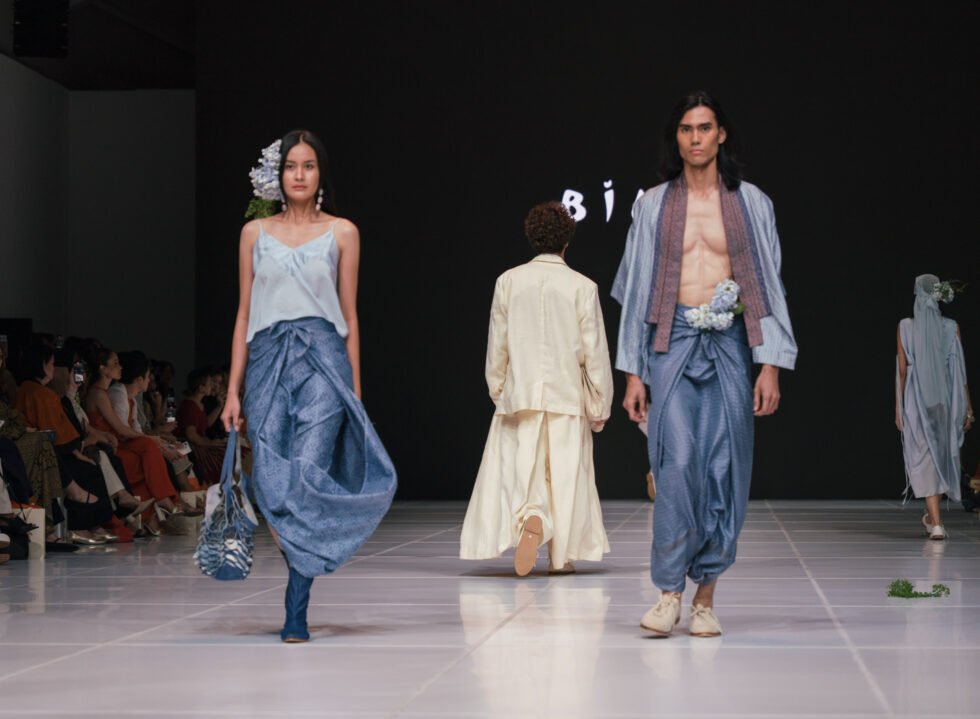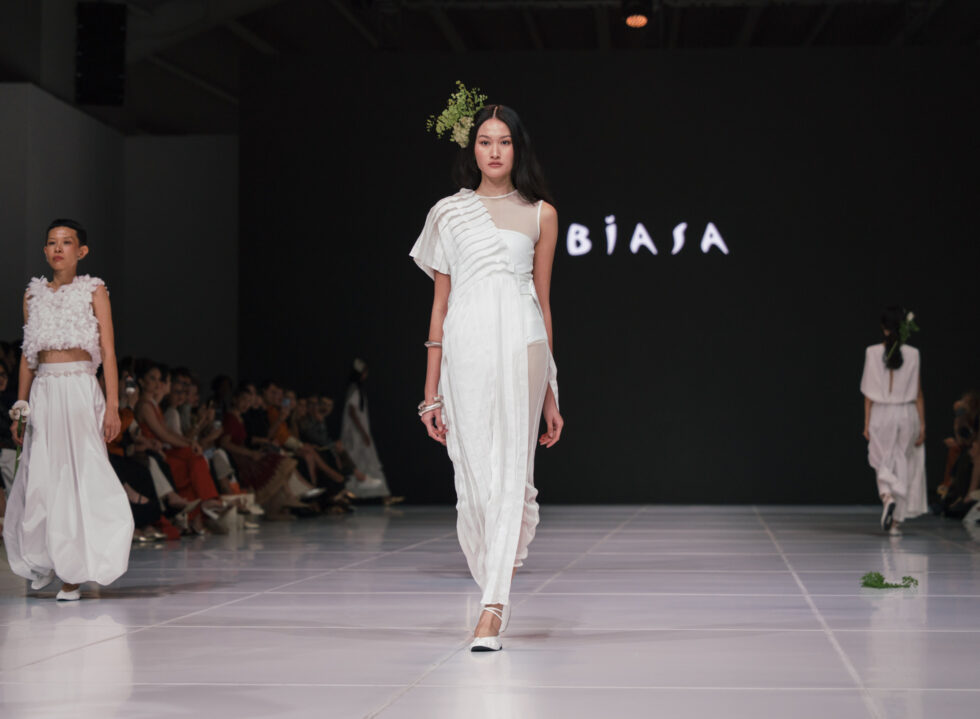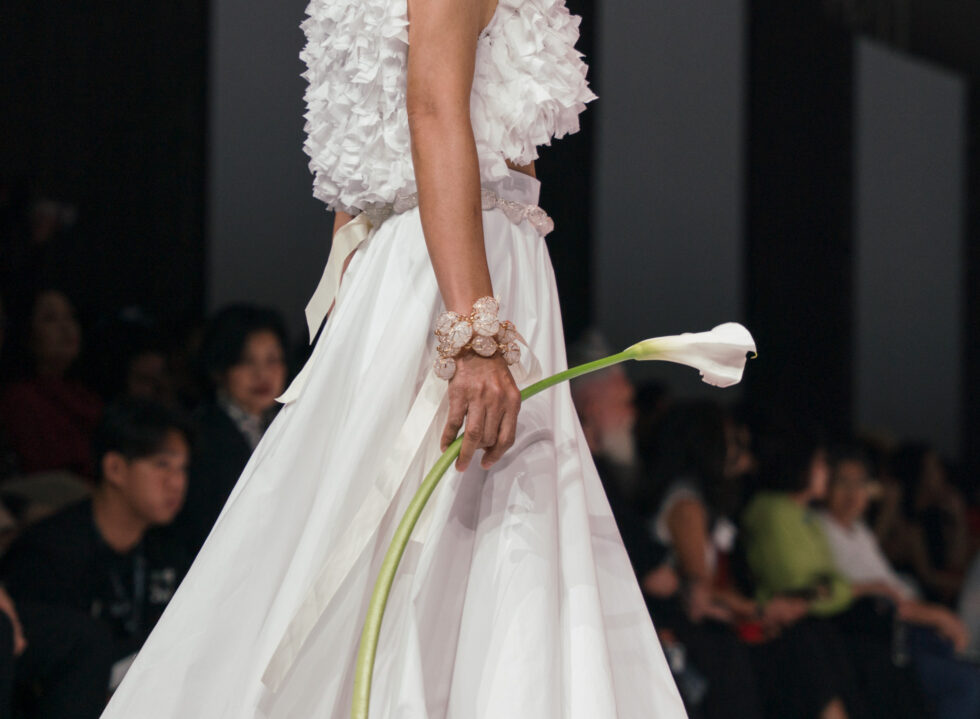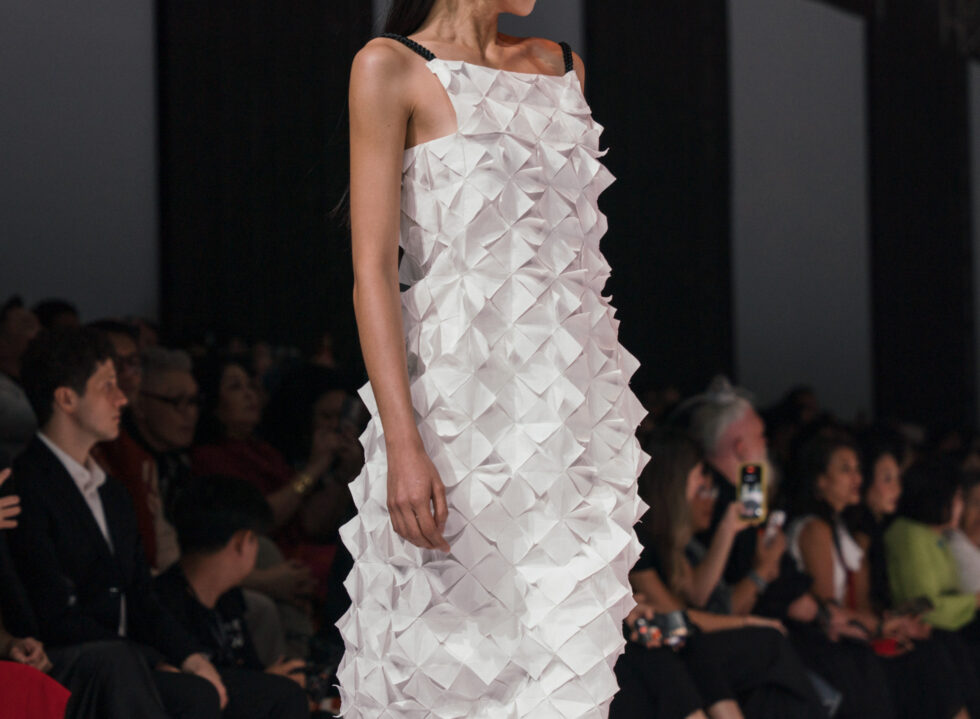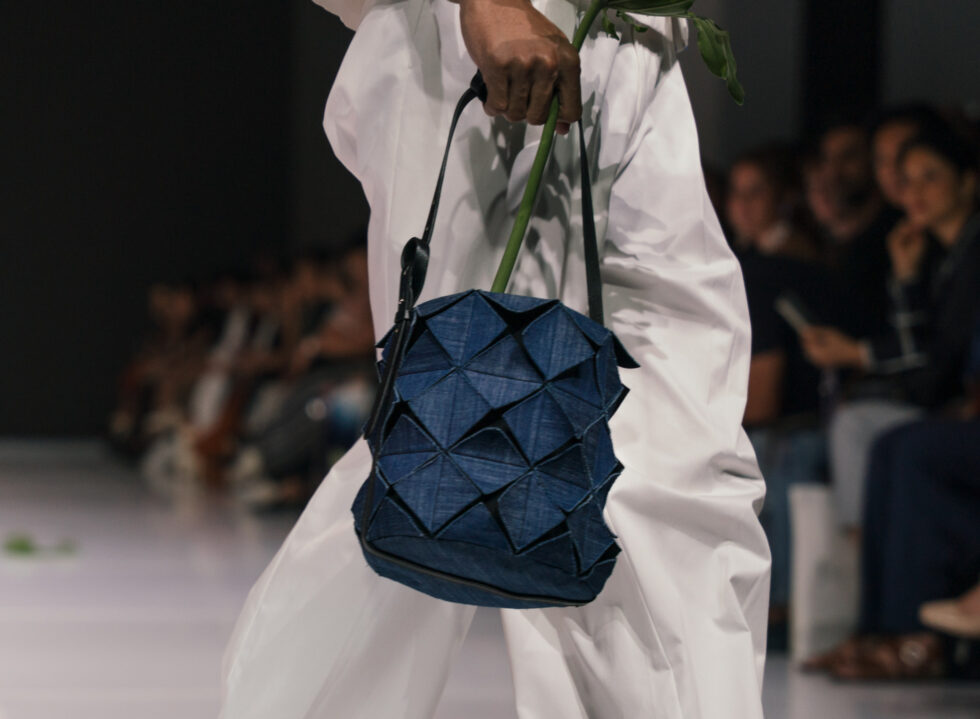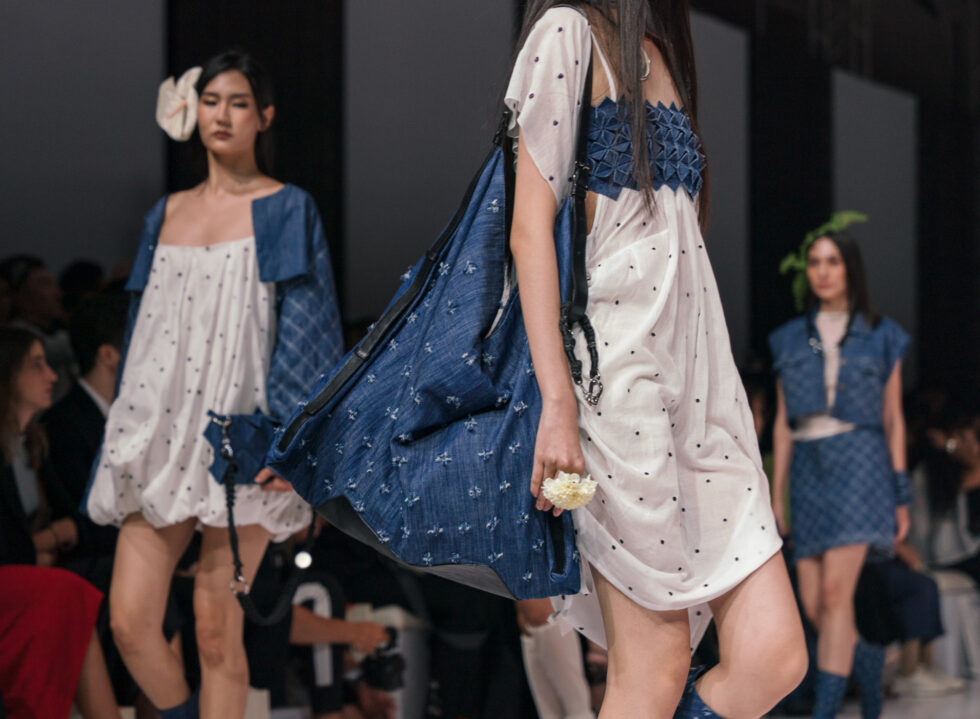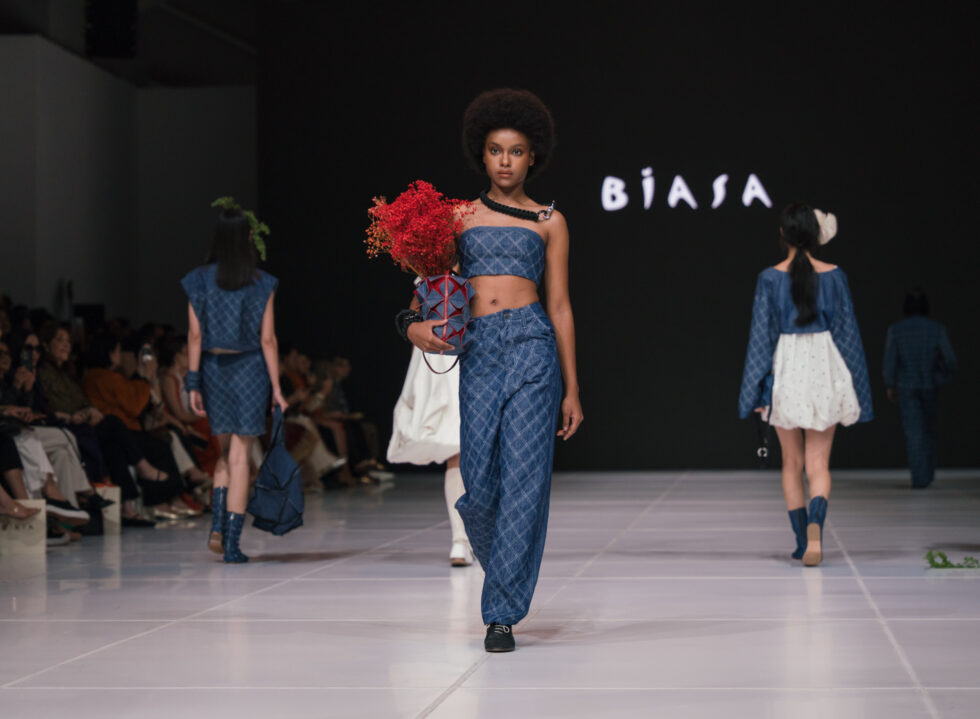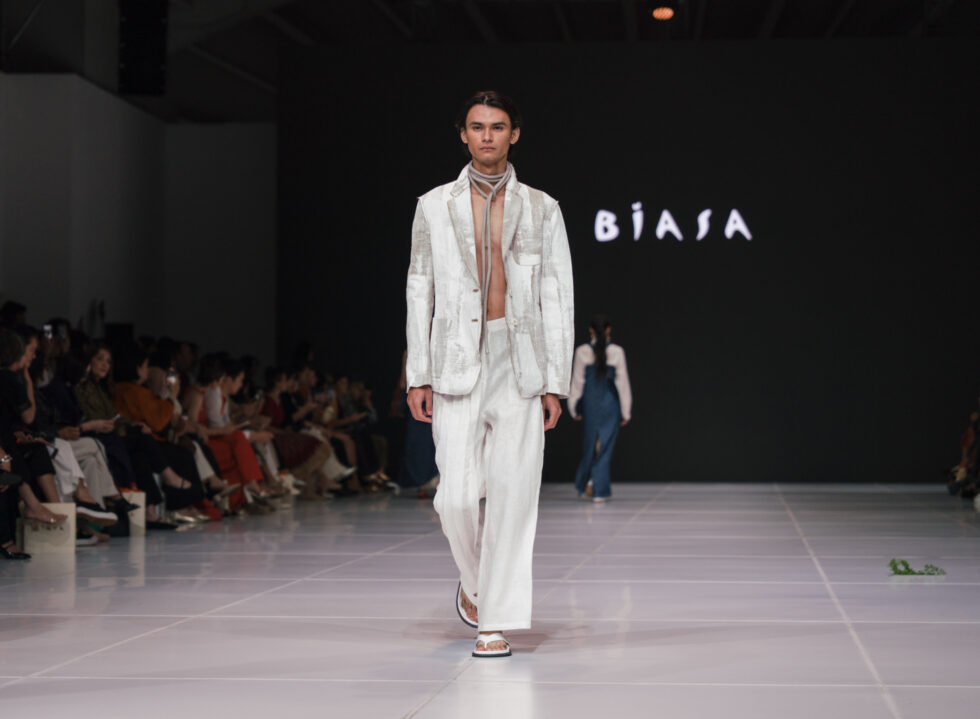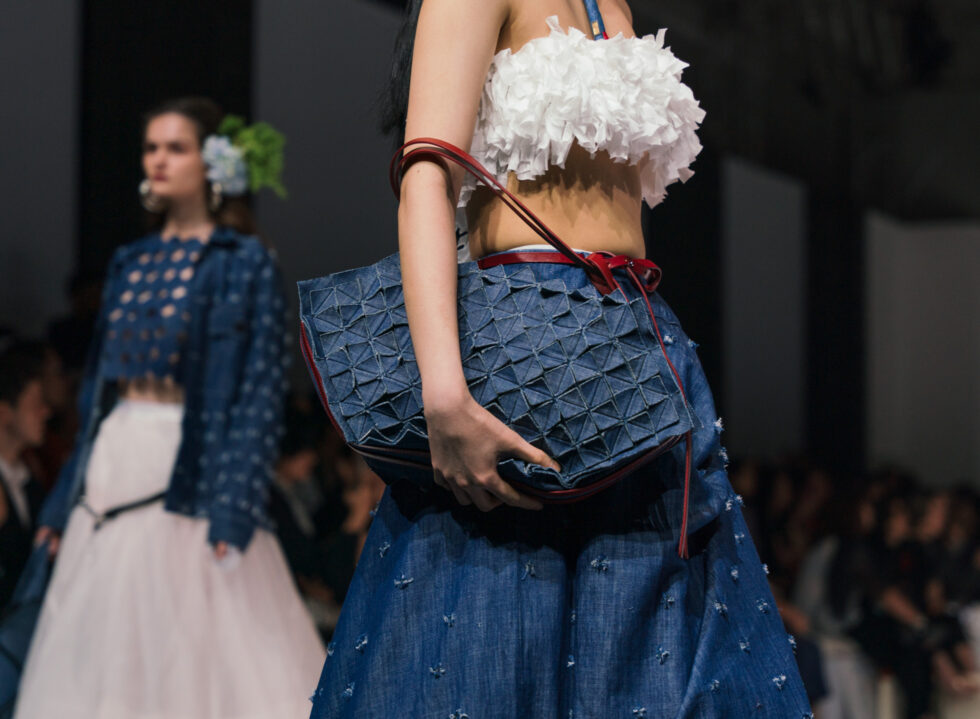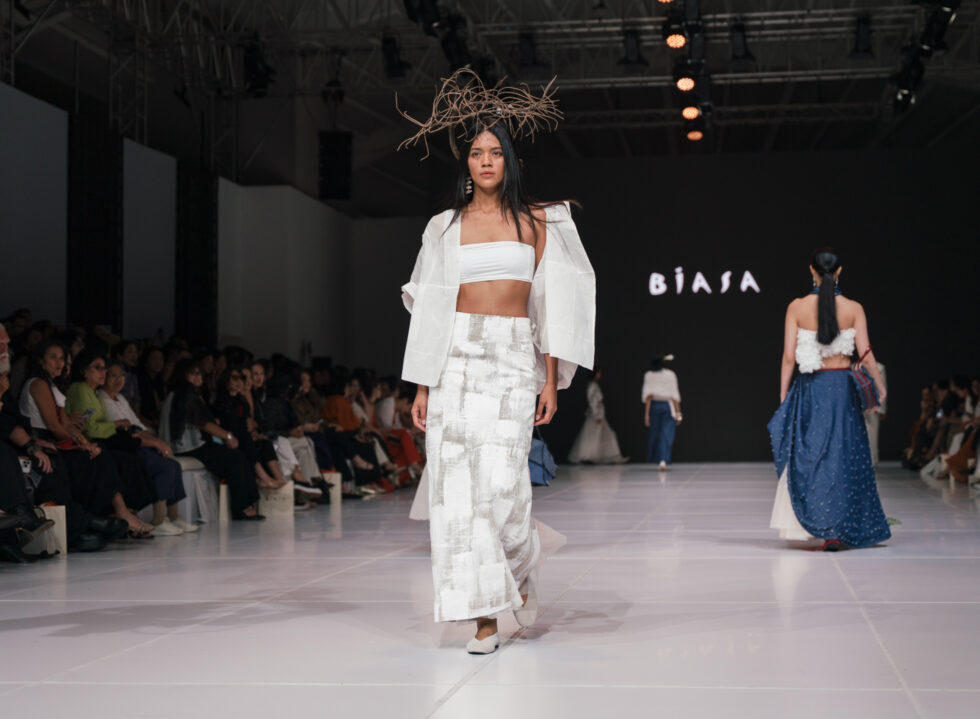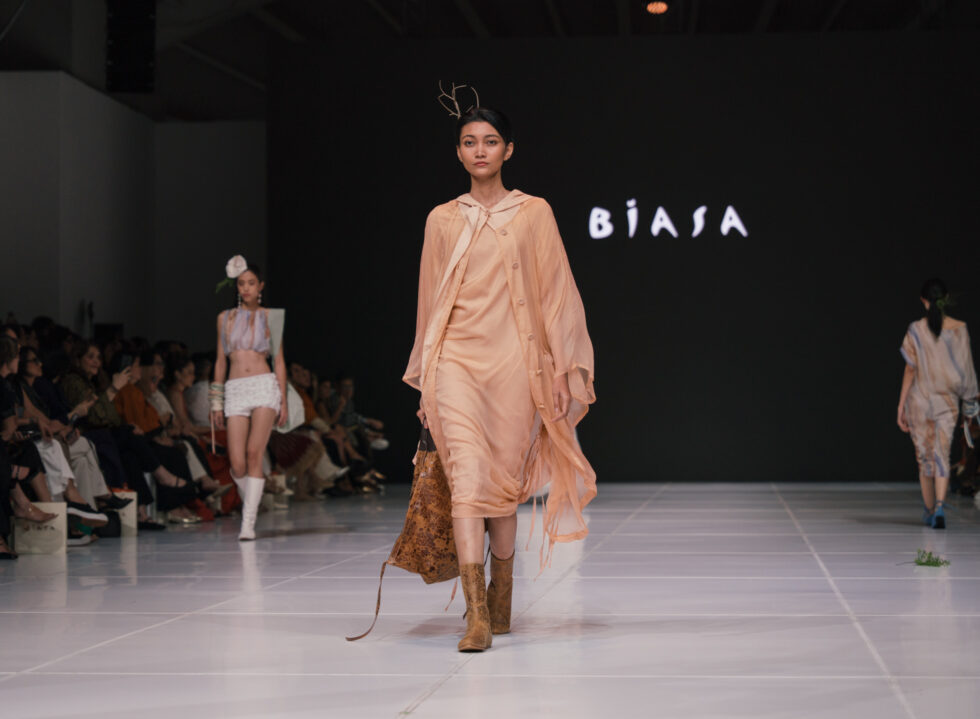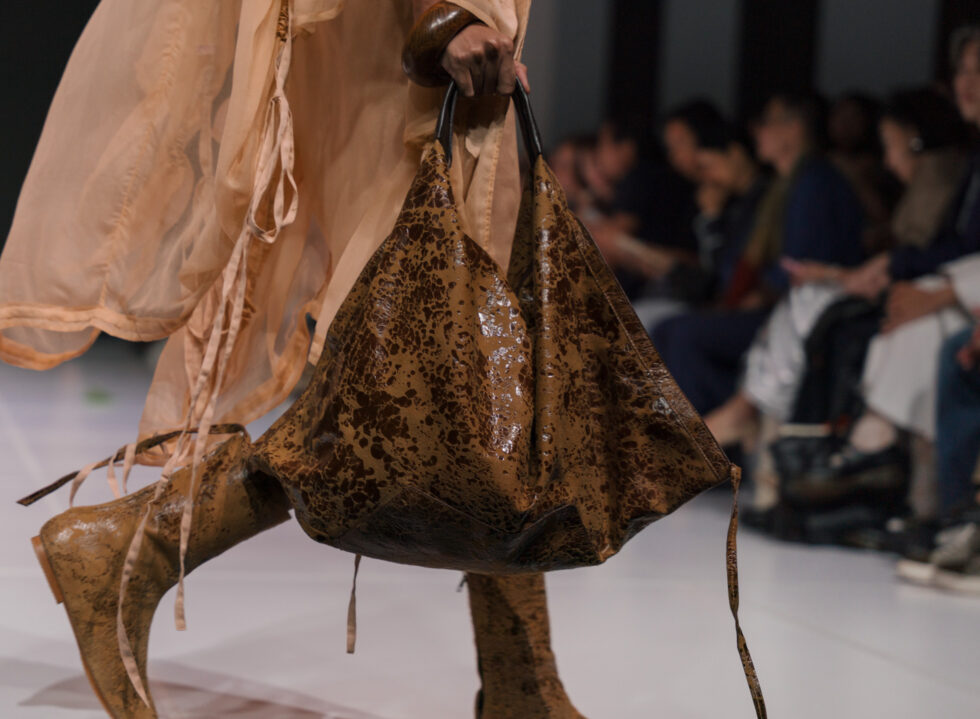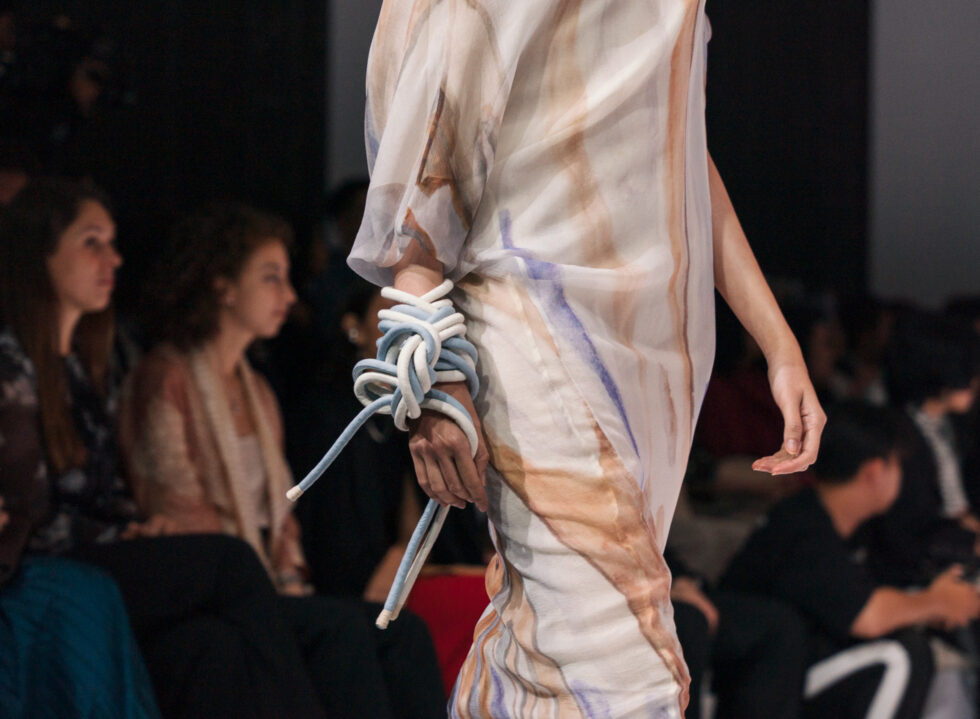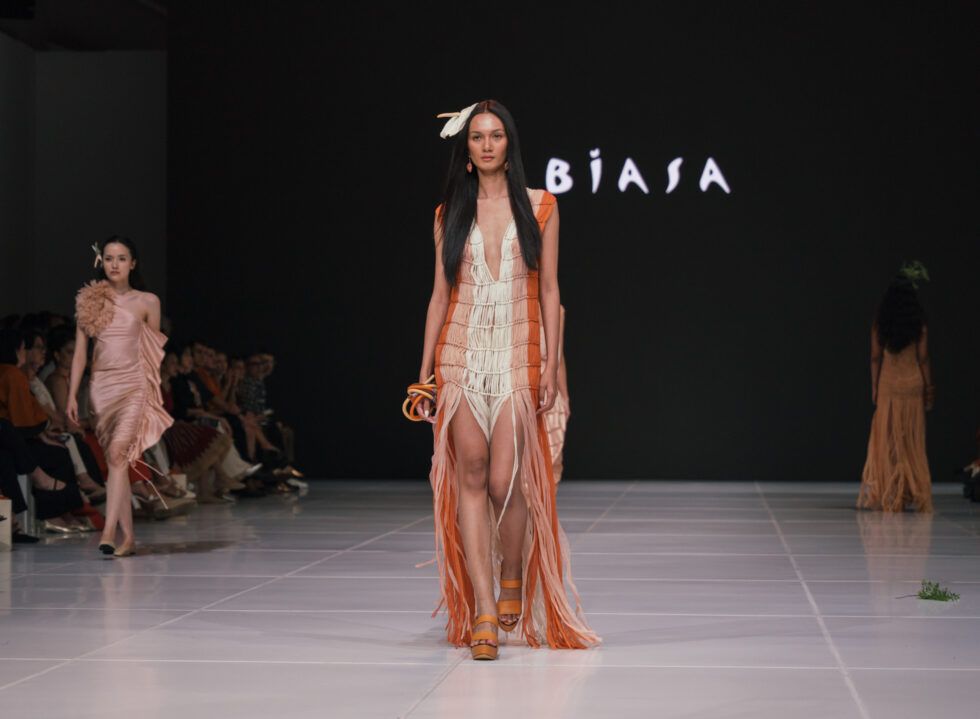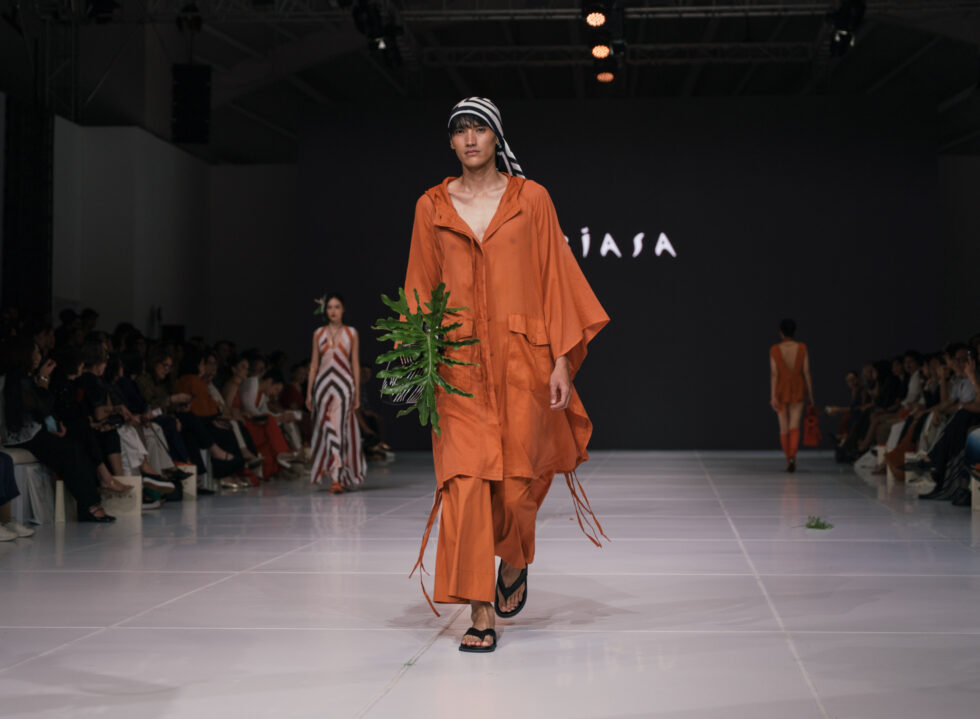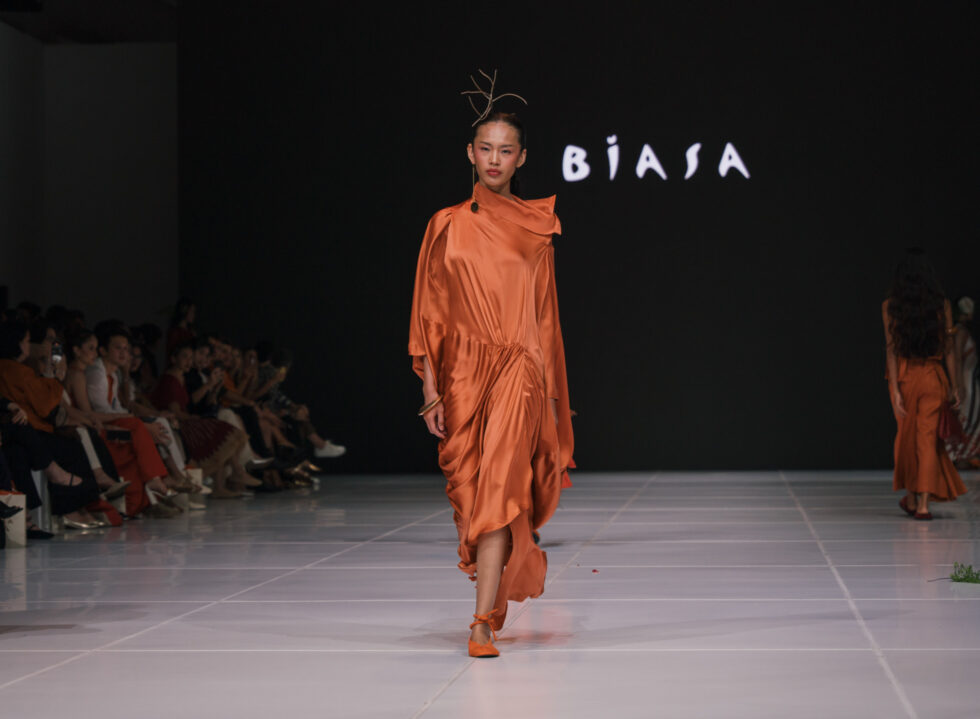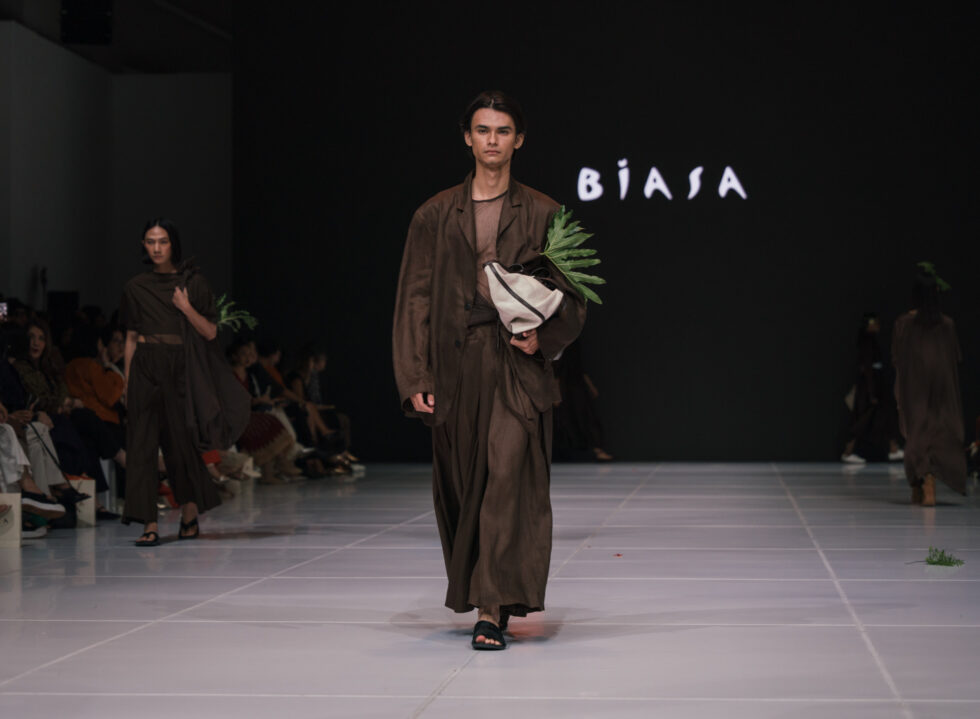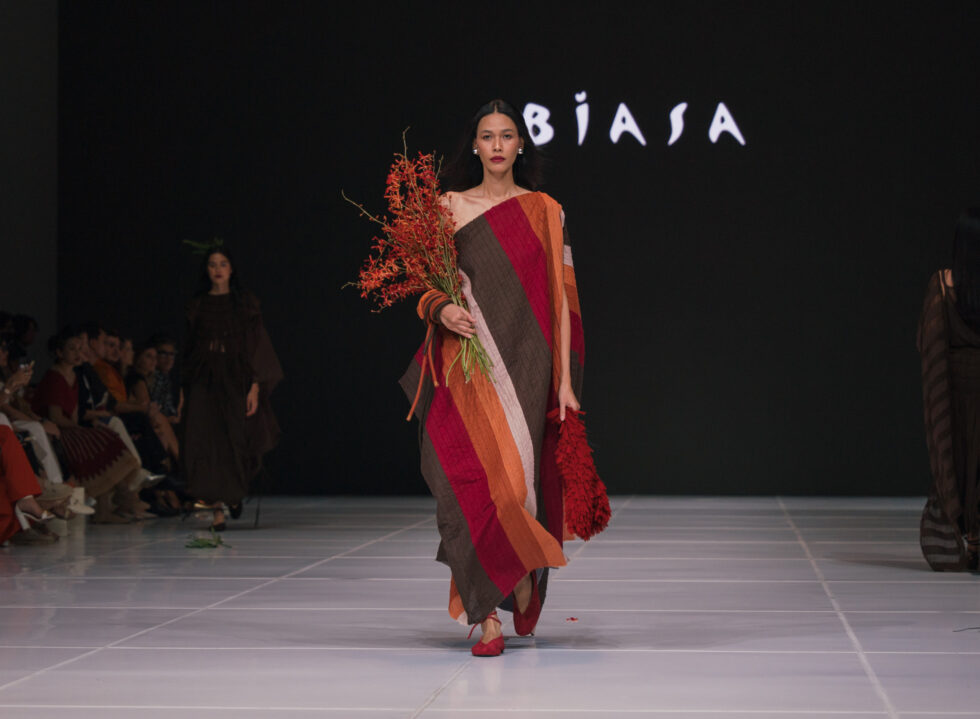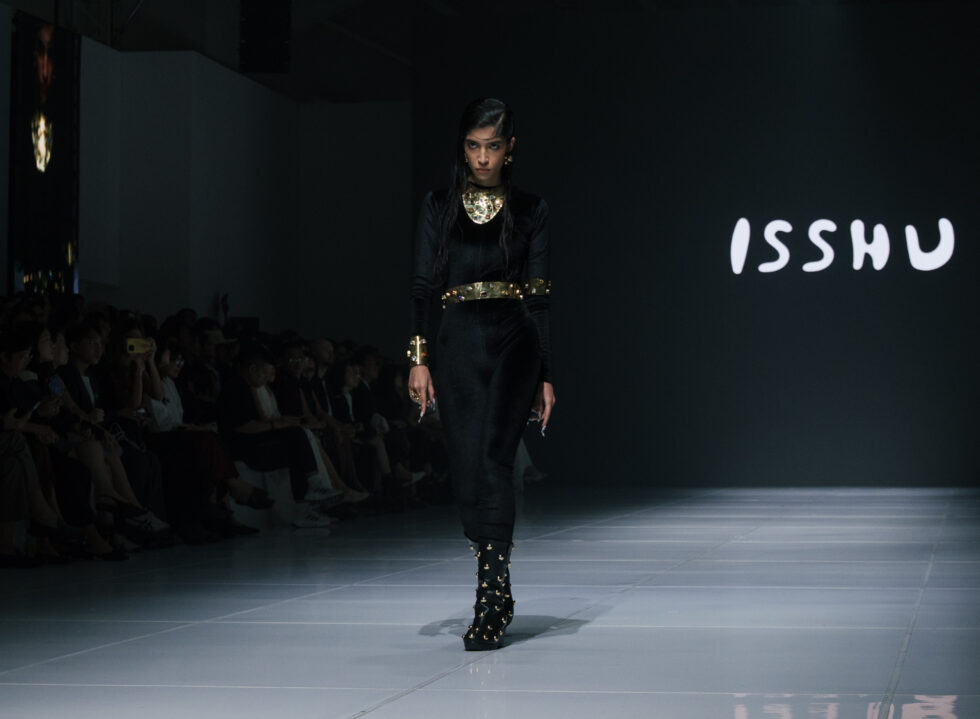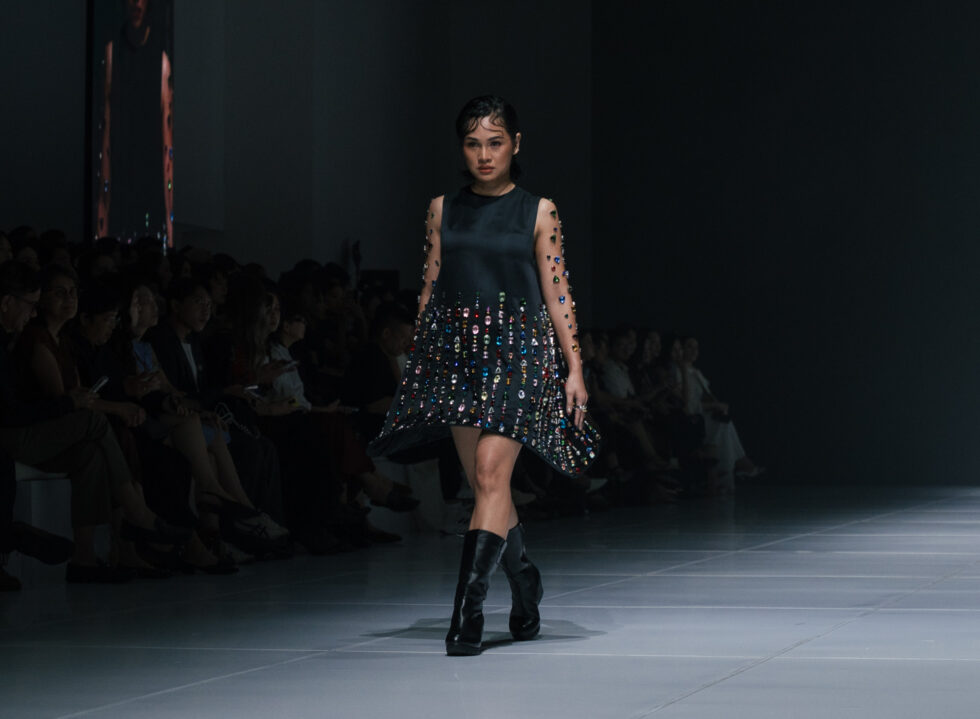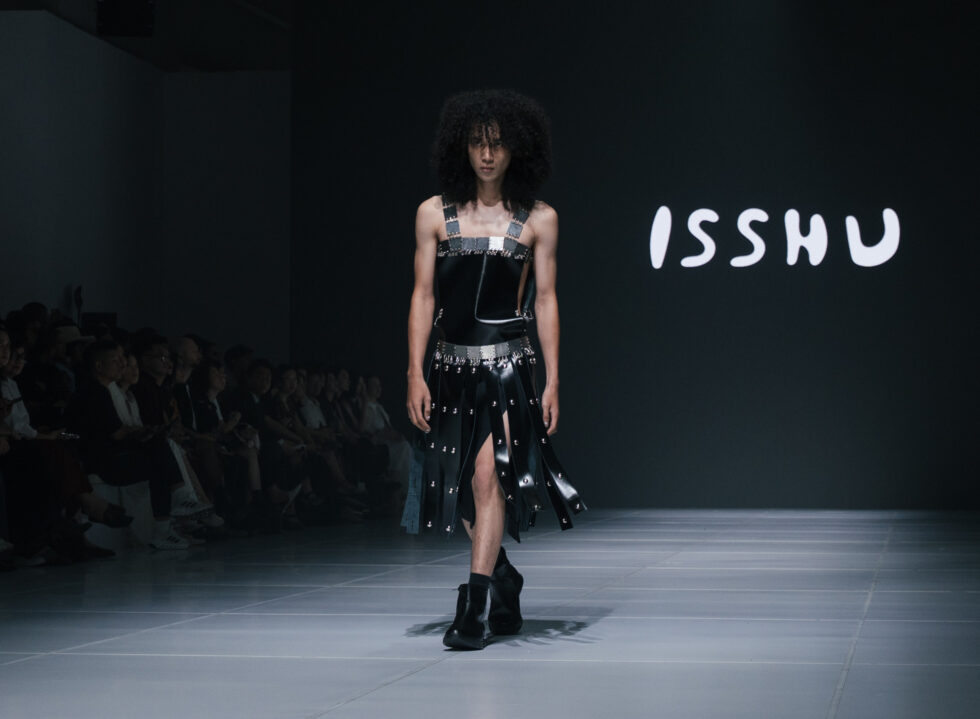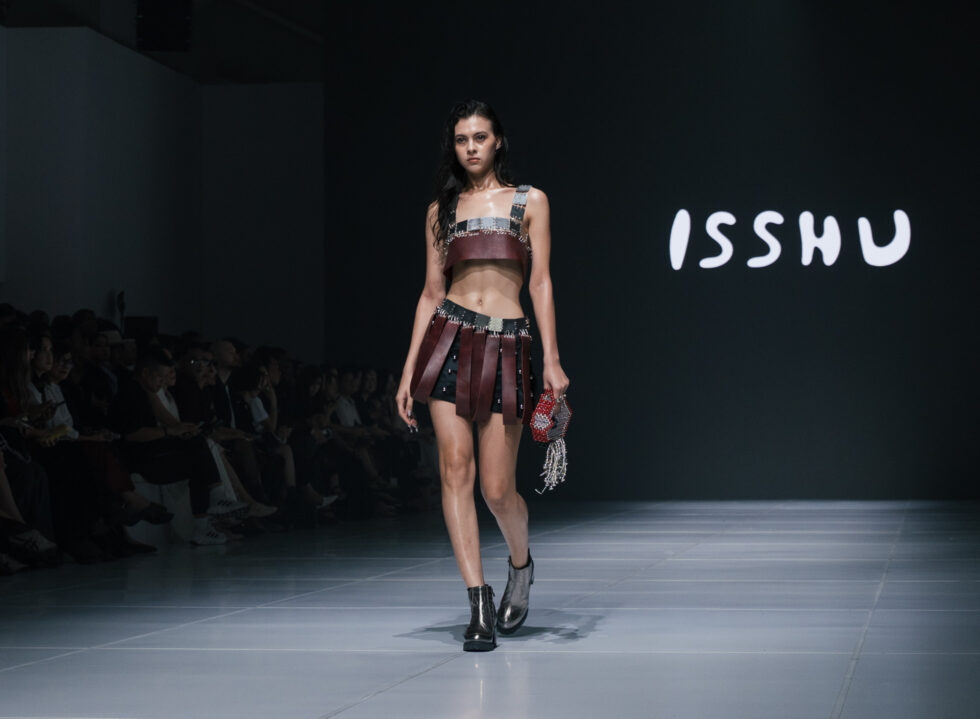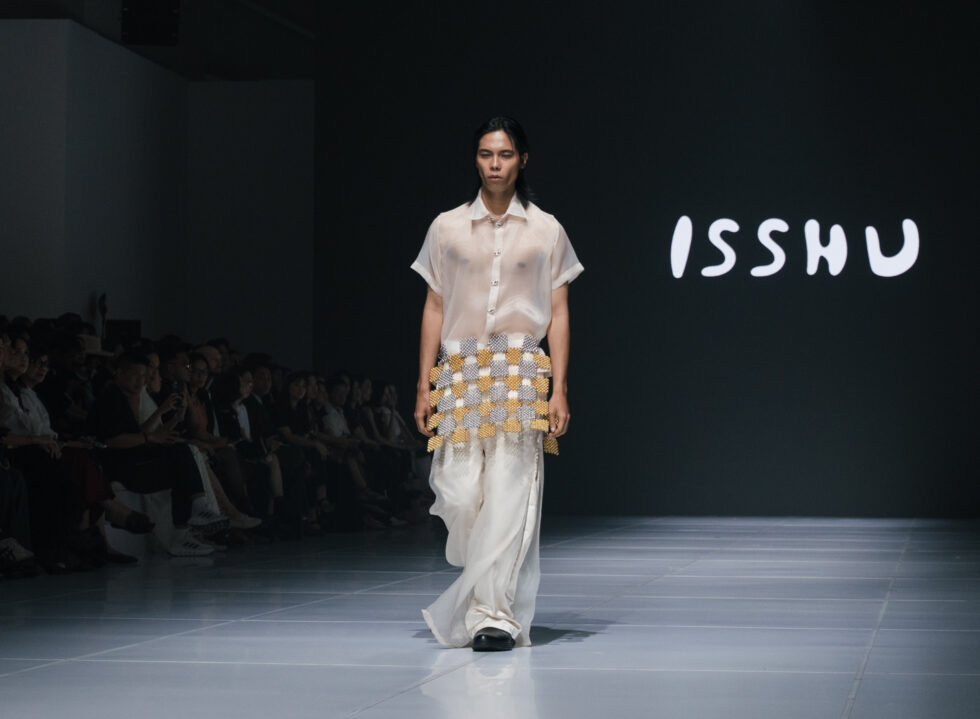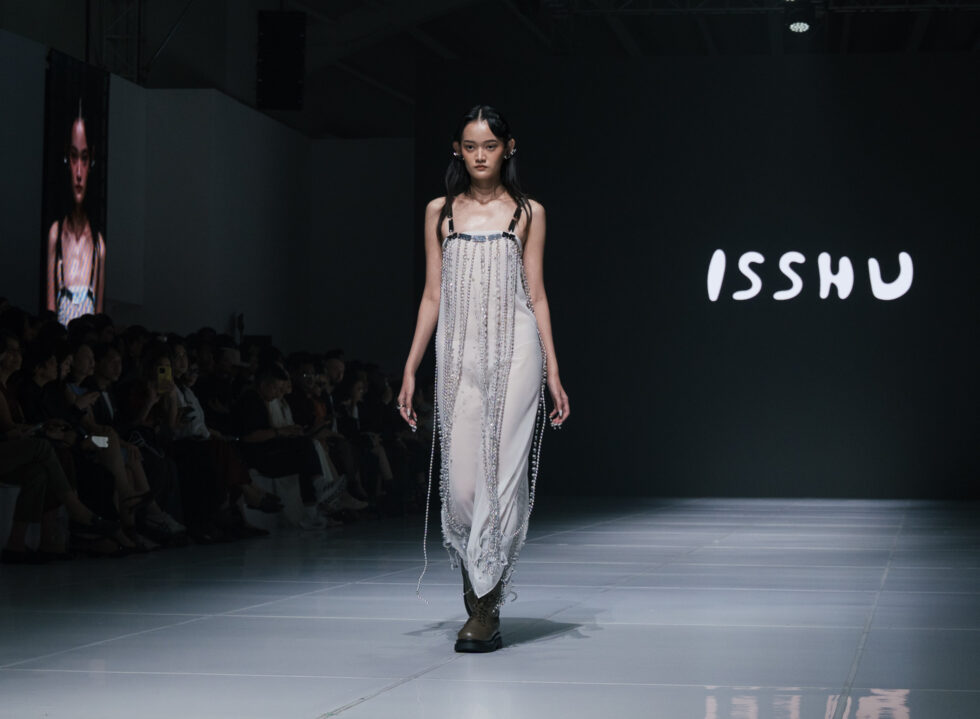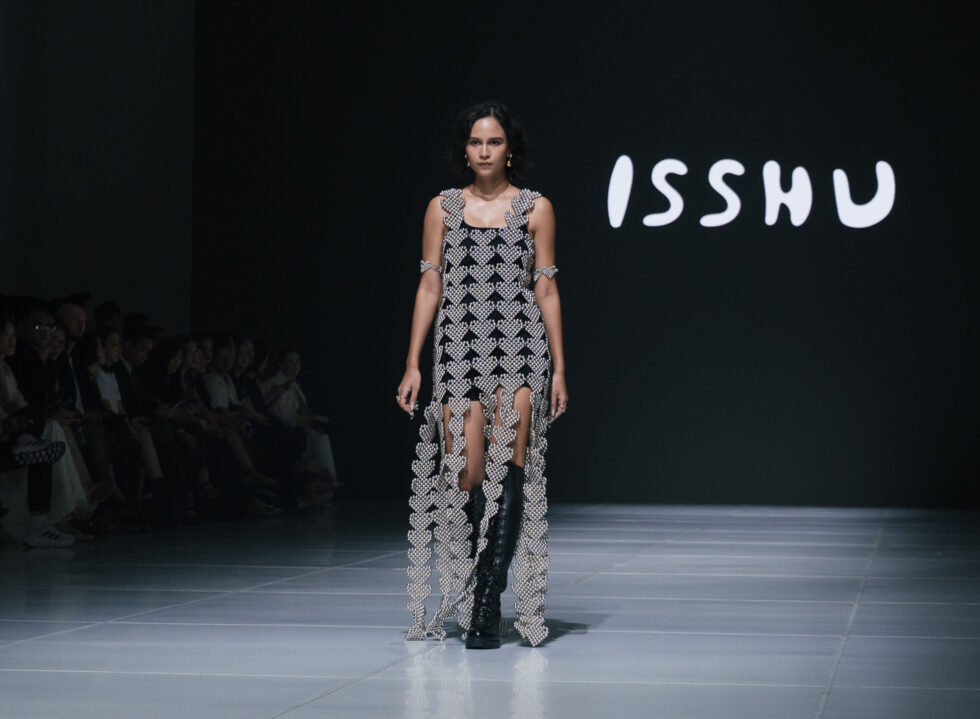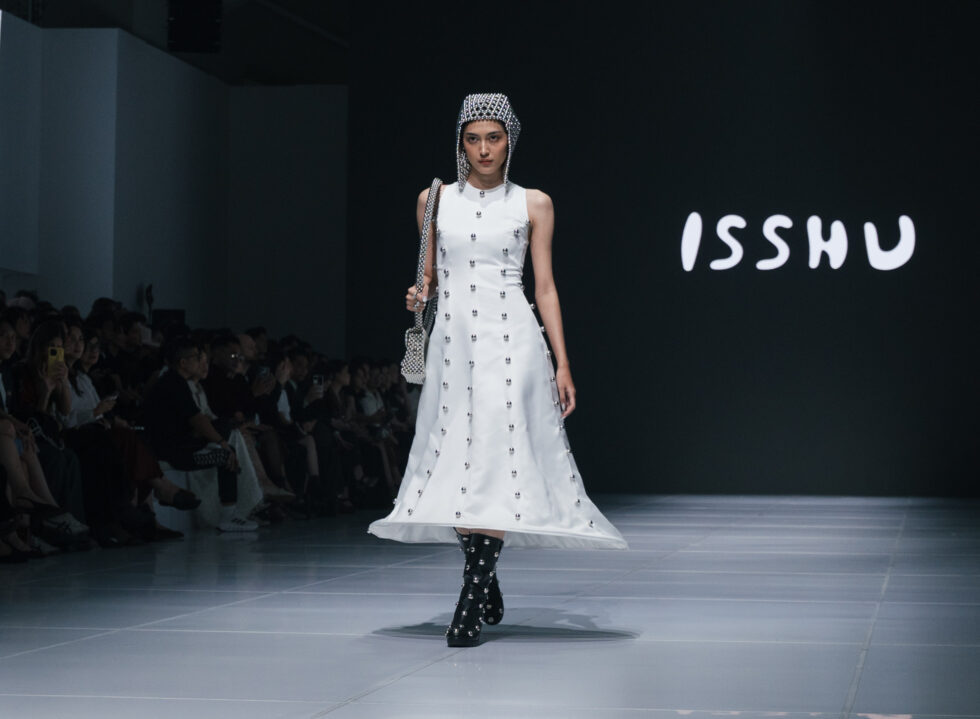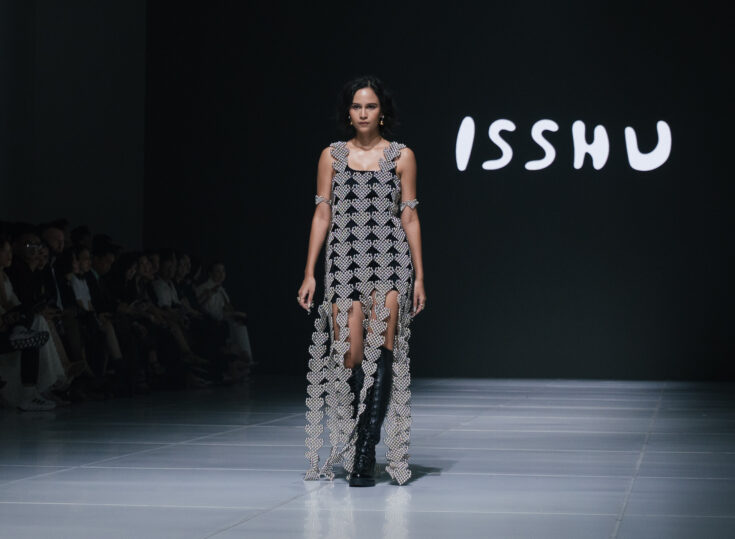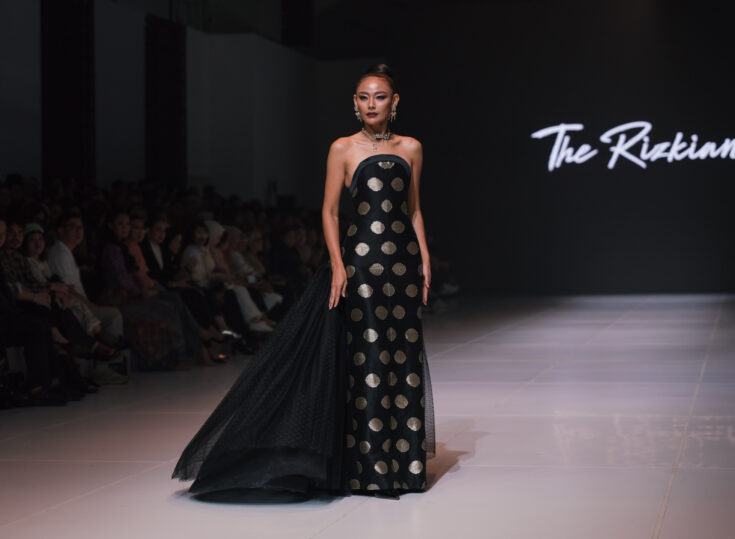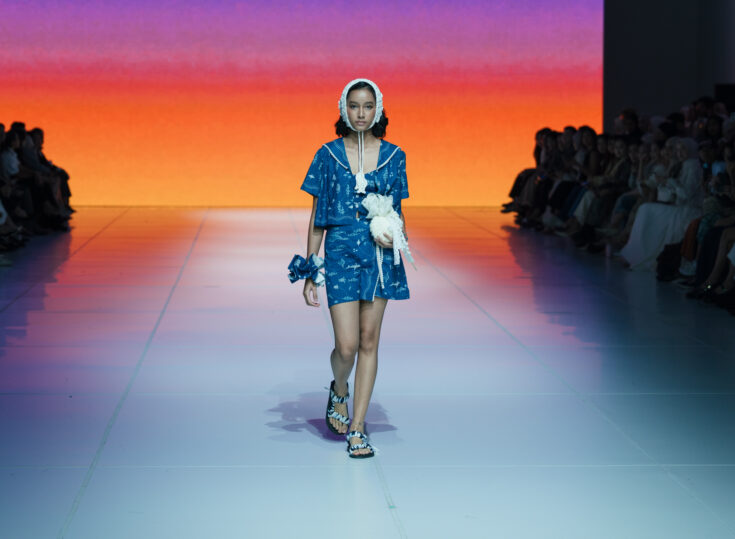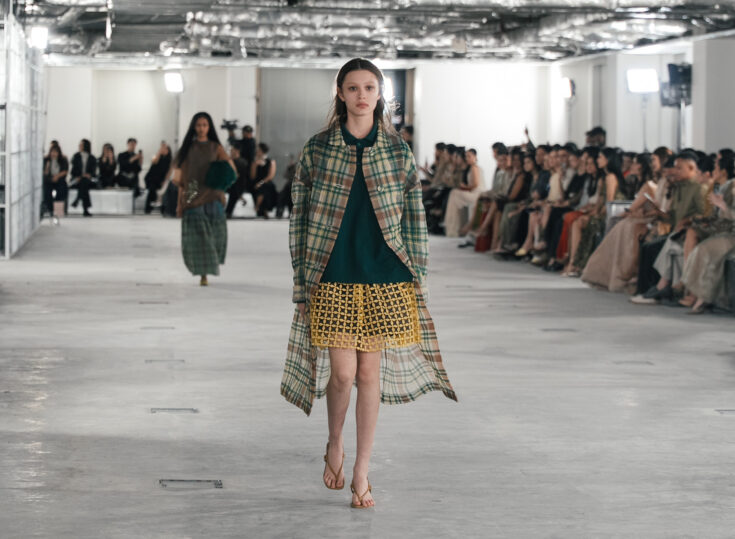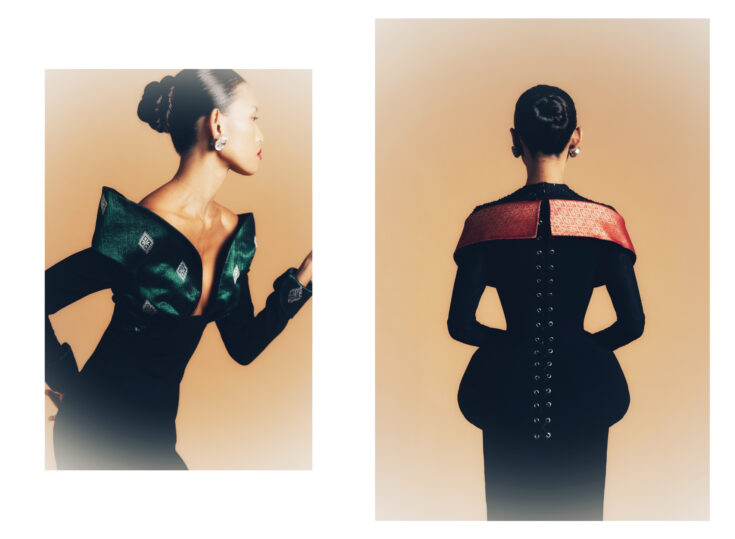Ever since social media fully took over our lives in the past decade, one of the most noticeable shifts in how show attendees consume a runway presentation is this: more often than not, they experience it through their phone screen. It has become a ritual now — a multitude of hands raised, phones held aloft, eyes fixed on small glowing rectangles as models saunter past. The crowd moves in near-synchronised unison, like some modern choreographed sport. And in that process, the scene before them often flattens into a two-dimensional image or video clip.
One wonders if the rich tactile quality of BIASA — shown across 70 looks — is lost when viewed only through a screen. The collection, divided into a whopping seven sections, showcased a wide terrain of textures through fabric manipulation: smocked tops and hot pants, white shirtdress with origami folds, quilted denim, and wonderfully airy fringe dresses resembling the straw leaves of a thatched roof.
Founder and creative director Susanna Perini dove deeply into what human hands are capable of, marrying textures with natural fabrics ranging from cotton mousseline, silk, denim to linen. Some results were so convincingly executed that the mind almost fails to register the illusion unless one pays close attention — like leather boots and hobo bags distressed to seem as though decades of wear had chipped the material away.
It was a visual feast, a reminder that handwork and craftsmanship remain the brand’s core essence. All of this translated into pieces that balance ease with elegant eclecticism — the kind that naturally appeal to a clientele with a more mature point of view. It’s a collection that unquestionably benefits from close inspection. Still, the runway could have been edited tighter to deliver a sharper punch.
—
On Saturday afternoon, accessories brand ISSHU presented a 16-look collection born from a collaborative effort between founder Rheza Paleva, stylist Allysha Nila (who also partners in product development), and visual creative Liko Sukhoy.
Rather than producing simple “clothes to accompany accessories,” the trio built a collection that placed ISSHU’s artistic drive front and center, amplified by the brand’s signature use of stainless-steel ball hardware. That approach was most evident in gladiator-esque looks featuring rectangular steel plates chained to leather cutting. Ditto the chainmail dress constructed from steel balls, worn over a black sheath by actress and model Lutesha Sadhewa, accessorised only with matching armlets that clicked deliciously as she walked.
These were, undeniably, more artistic pieces than functional garments. But the show succeeded in asserting ISSHU’s identity through creative expression rather than mere product display. Though, it’s time to consider losing the reliance on the steel-ball hardware.
And who’s to say the brand’s future isn’t in custom pieces for musicians’ stage performances or red-carpet commissions? It’s a step in the right direction — breaking free from the confines of “accessory brand” and inching toward a more expansive creative entity. (The terrific New York–based CHRIS HABANA immediately comes to mind.)
Still, championing artistic expression demands a cohesive vision. ISSHU needs to dig deeper to articulate what it stands for and why it matters. Artistic expression not merely as an aesthetic choice, but as a form of devotion. Edgy materials not as motifs, but as intentional acts of resistance.
